Emmys 2020: Inside the Best Sets on TV This Year
The Hollywood awards season will soon be in full swing, starting with the 72nd Primetime Emmy Awards on September 20 at 8 p.m. ET on ABC. Gone is the stargazing on the couture-laden red carpet at the Microsoft Theater, as this year, television’s biggest night enters new territory with a virtual broadcast hosted by Jimmy Kimmel.
Design aficionados, however, should tune in before that, to see if their favorite show makes the cut at the Creative Arts Emmys, where hopeful production designers, art directors, and set decorators have their turn in the spotlight. Honoring outstanding production design and artistic achievements, the virtual ceremonies stream on Emmys.com on Monday, September 14, through Thursday, September 17, at 8 p.m. ET and Saturday, September 19, at 8 p.m. ET on FXX.
Herewith, AD takes a look at some of the more memorable moments in set design this year.
Hollywood
Matthew Flood Ferguson, Production Designer
Mark Robert Taylor, Art Director
Melissa Licht, Set Decorator
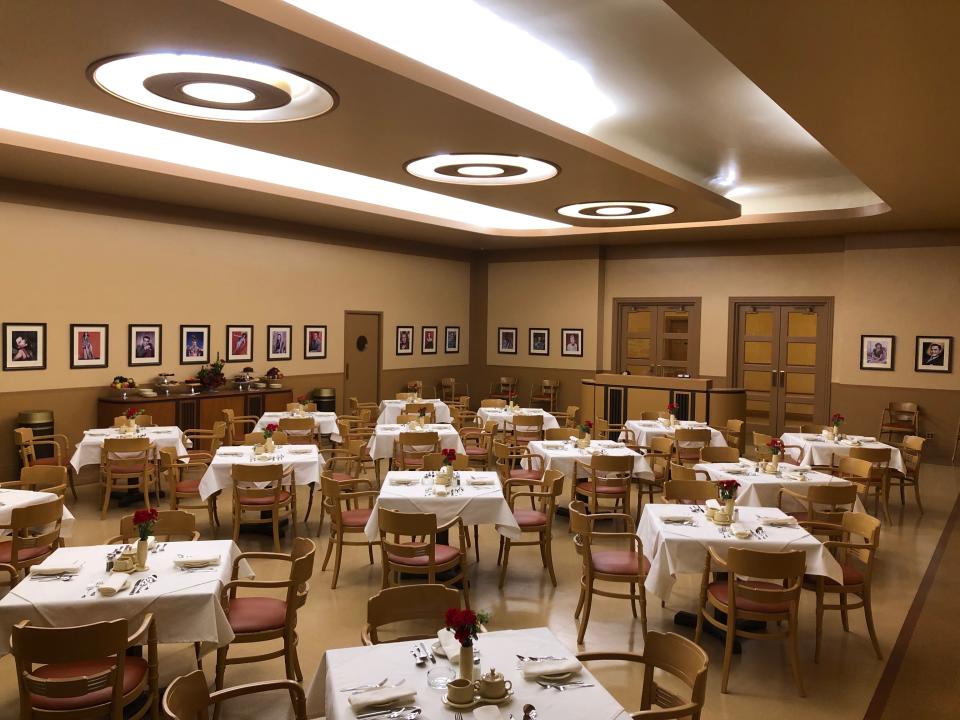
Designing Tinsel Town for the Netflix series Hollywood was a job tailor-made for production designer Matthew Flood Ferguson, a film buff and design devotee of Hollywood’s Golden Age.
The brainchild of Ryan Murphy, the show tells the tale of both real and fictional aspiring actors, screenwriters, studio bosses, and producers during the industry’s heyday in the 1940s. Ferguson and set decorator Melissa Licht created Los Angeles bungalows, a midcentury gas station, the studio commissary, and even iconic landmarks such as the pink-and-green palm-leaf patterned suites of the Beverly Hills Hotel and the famous lunch counters at Schwab’s Pharmacy.
“I wanted [to] capture the architectural movements developing in Southern California in the early part of the 20th century. For many of our interiors, I wanted to pay homage to the great designs of Billy Haines and as a fun little nod, pull references from old films from the 1930s and 1940s,” says Ferguson, who looked to classic black-and-white celebrity stills from Getty Images (that grace the walls of the commissary) for inspiration. For the Hollywood apartment of leading-man-hopeful Jack Costello (played by David Corenswet), he referenced the 1947 film Kiss of Death, the wallpaper from Joan Bennett’s apartment in Fritz Lang’s Scarlet Street, and the architectural details and plaster walls of the character Joe Gillis’s studio in Sunset Boulevard.
Succession
Stephen H. Carter, Production Designer
Carmen Cardenas, Art Director
George DeTitta, Set Decorator
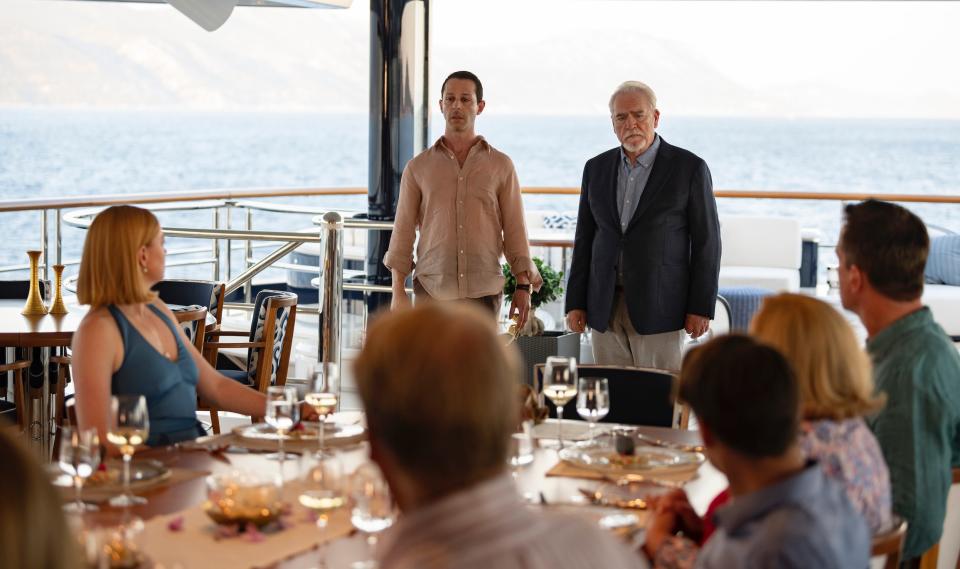
For the season two finale of HBO’s binge-worthy series Succession, the backdrop features the ultimate toy for every Master of the Universe: a $150 million yacht complete with swimming pools, luxurious high-end main suites, and a water slide.
Filmed on location off Croatia’s coast near Dubrovnik, the episode foregrounds the Solandge yacht, which had the appropriate sleekness and proportions. “There was little we could do to change the large furniture, which on boats is commonly bolted in place so as not to move in rough weather,” production designer Stephen Carter explains. Some of the design elements (such as the backlit purple quartz walls, for example) “seemed too flashy a choice for Logan Roy or (his wife) Marsha. They weren’t part of our minimalist color palette and I thought they would distract from the other actors, so we applied a protective paper over them and then a textured wall covering.”
While most of the season’s episodes include Manhattan mansions and country estates, another key finale set was the Senate hearing room, where interrogations took place. Set decorator George DeTitta did a deep dive into all things Washington, and looked to the room where the Kavanaugh hearings took place “as the prototype,” he says. “My biggest challenge was the large sconces that covered the walls which were large in scale. We decided to use a company that specializes in props for Broadway shows to create the lights. They did a great job and made the room feel authentic.”
Will & Grace
Glenda Rovello, Production Designer
Conny Boettger-Marino, Art Director
Peter Gurski, Set Decorator
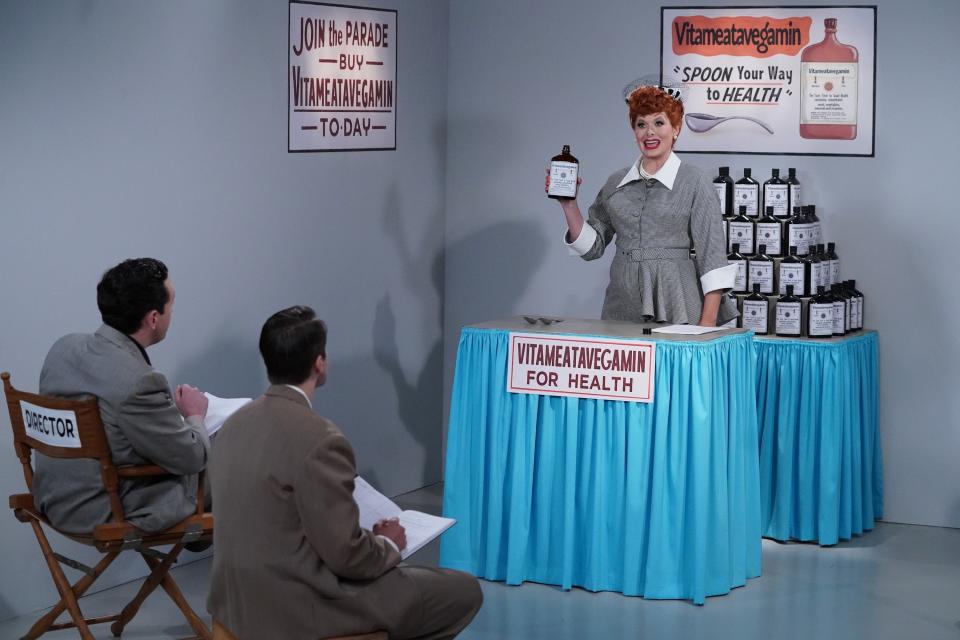
Will & Grace - Season 316
It’s only fitting that NBC’s beloved sitcom Will & Grace (which went off the air in 2006 and was brought back in 2017) pays homage to another iconic show in its final season. In the Emmy-nominated episode “We Love Lucy,” Grace (Debra Messing), Jack (Sean Hayes), and Karen (Megan Mullally) each portray television’s favorite redhead (Eric McCormick as Will plays Desi Arnaz) in fantasy scenes.
Emmy-winning production designer Glenda Rovello (who has been with the show since its inception in 1998 and has received 10 nominations and four wins for her work) and set decorator Peter Gurski (four-time nominee for Will & Grace and The Class) created a replica of the Ricardos’ Manhattan apartment. Viewers will also recognize the studio set from the classic episode “Vitameatavegamin,” and faithfully recreated scenes featuring a conveyor belt run amok at a chocolate factory and grape-stomping at an Italian vineyard.
The designers brought in 1,400 pieces of chocolate buttercream recreated by See’s Candy; 1,200 pounds of grapes; and even tracked down a prop bottle of Vitameatavegimin on eBay. “It was so challenging to get the little details right, such as the embroidered lampshade in the corner or the small vase with the exact number of fake roses (13) on the mantel,” says Gurski. Another hurdle, he says, was designing the scenes in a way that would translate to black and white.
The Handmaid’s Tale
Elisabeth Williams, Production Designer
Martha Sparrow, Art Director
Robert Hepburn, Set Decorator
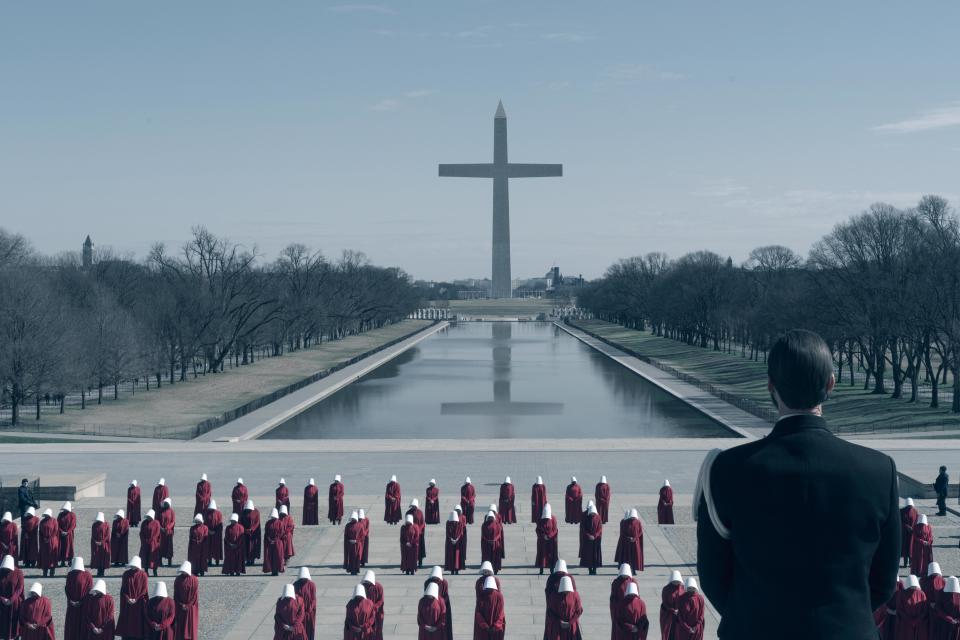
Household
Dystopian design takes on a new meaning with season three of Hulu’s The Handmaid’s Tale. The Emmy-nominated episode “Household” depicts Washington, D.C., after it has been taken over by the Republic of Gilead. Landmarks such as the Washington Monument have been changed to a crucifix, while a jarring image of a headless statue is all that is left of the Lincoln Memorial.
Production designer Elisabeth Williams (who has won two Emmys for her work) looked to the regimented designs of Nazi Germany for direction, particularly for the flags that reflect authoritarianism. “The challenge is always to avoid falling into clichés but rather to rethink what dystopia means and to create our own world,” she says. “We always anchor our designs in reality by borrowing from history or by letting ourselves be inspired by what we see on the daily news.” The nation’s capital scenes proved quite the challenge, particularly the shocking ones at the National Mall, where the silenced handmaidens gather in their red gowns and white bonnets. “We prepared months in advance, with 3D models,” explains Williams. “There was no room for error. We shot the live-action part of that scene in a single day and had limited access to the Lincoln Memorial as it remained open to the public. Our Visual Effects team painted out hundreds of bystanders and added in hundreds of handmaidens.”
Big Little Lies
John Paino, Production Designer
Austin Gorg, Art Director
Amy Wells, Set Decorator
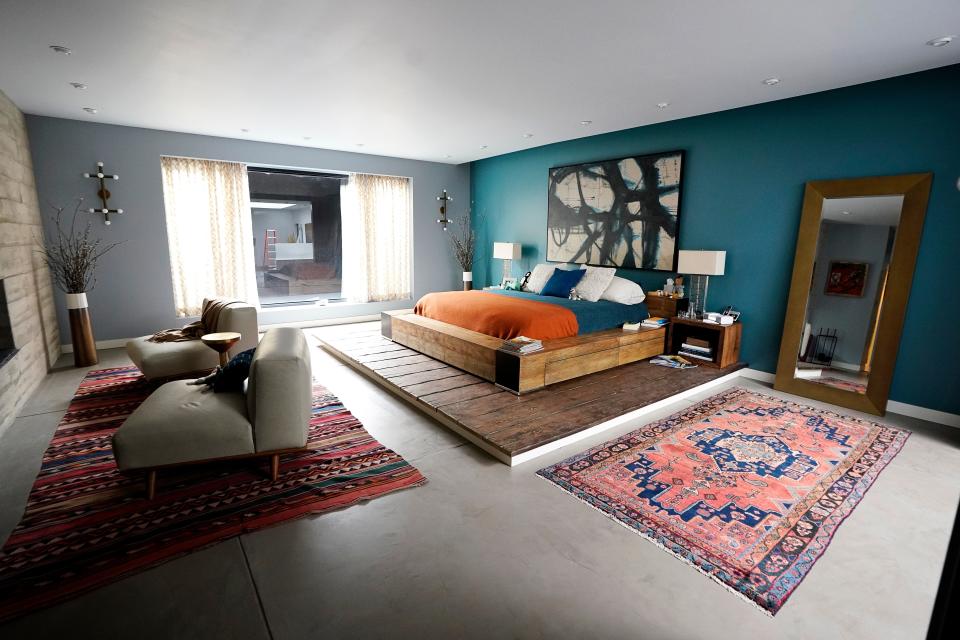
Creating the world of the Monterey Five on HBO’s Big Little Lies was a character study, as every house tells the story of its owner. Production designer John Paino and set decorator Amy Wells first began with the socioeconomic divisions and lifestyles of each of the characters. At the top of the pyramid is high-powered attorney Renata (Laura Dern), whose family home is complete with the ultimate power accouterments: a dramatic staircase, floor to ceiling windows, and a view of the ocean. The sleek ranch-style home of grieving and troubled Celeste (Nicole Kidman) on the Monterey Peninsula (filmed in a Carmel residence that doubles as an off-season B&B) is isolated, with ominous crashing waves representing the abuse that took place inside. The four-bedroom traditional home of Reese Witherspoon’s character, Madeline, boasts a well-appointed kitchen where much of the family dynamics take place around a large communal island. Alternatively, Shailene Woodley’s Jane lives in a condo with her son, Ziggy, and is not as wealthy as the rest of the group. The design is “Boho, Pier One, and thrift shop,” says Wells.
Season two introduces Celeste’s mother-in-law Mary Louise (played by Meryl Streep), who moves into Jane’s condo complex. “Meryl gave me input as to what she wanted for her character and is very sensitive to her surroundings,” says the set decorator. “She really wanted the condo to feel very East Coast and the art we added for her was more figurative than abstract.” Paino expands on this, noting, “Her decor was provincial Connecticut Protestant new classic with a conservative bent.”
Originally Appeared on Architectural Digest

